There are so many types of control valve packing materials are available in the market. The selection of control valve stem packing is often based on the temperature range. Effect of packing friction on process control, pressure/temperature/ emission sealing capabilities, and service life.
Almost, all control valves use packing except diaphragm valves. In this article, we will discuss types of control valve packing and their use in various process conditions.
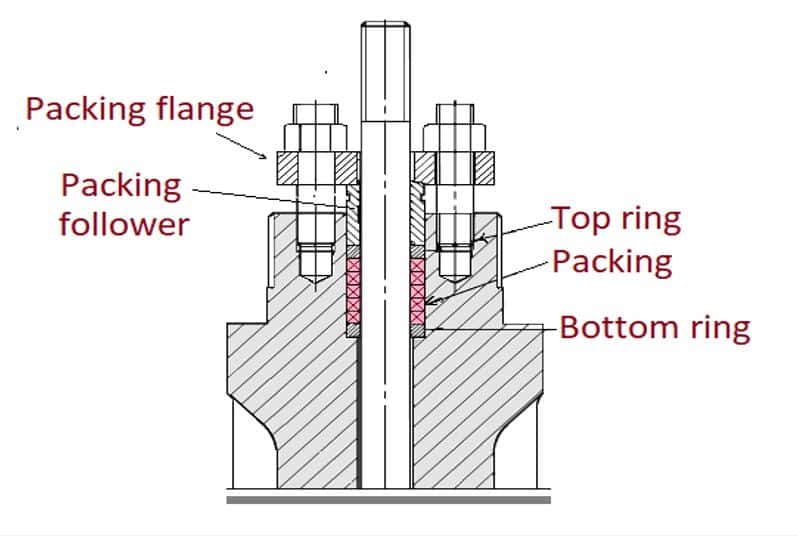
Table of contents
What is valve packing?
Valve packings are traditional and still are a kind of dynamic sealing structure. We install it between the valve stem and the valve cover packing box to prevent external leakage. Packing material, reasonable packing box structure and installation methods ensure the reliable sealing performance of the valve. Therefore, the performance of the control valve highly depends on the type of packing material used in the control valve.
There are various valve sealing gasket materials available and different gaskets suitable for different working conditions, including asbestos, graphite, PTFE, etc.

Why is valve stem packing required?
Control valve stem packing products are designed to meet the most demanding and challenging needs of refineries, chemical processing facilities, power generation, and many more.
We use stem packing to avoid leakage from process pipe to atmosphere through a moving stem. It ranges from high temperature and pressure steam service to aggressive chemical exposure and fugitive emission reduction.
Types of Valve Packing
Flexible Graphite Valve Packing
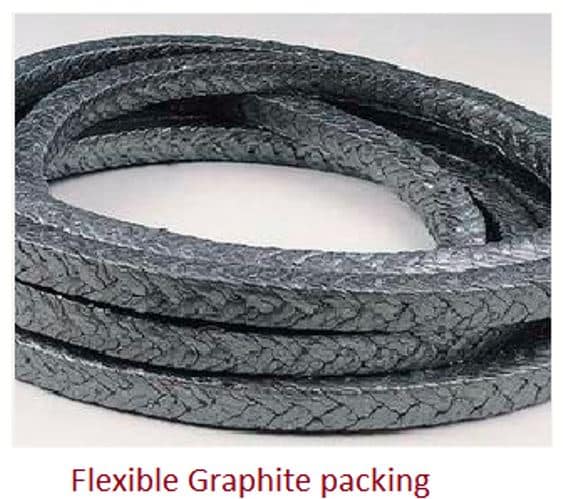
Flexible graphite packing is the most suitable packing material for the valves operating in a o temperature range above 232 °C (450° F). This has wide application in the field of petroleum, chemical industry, power generation, chemical fertilizers, medicine, paper, machinery, metallurgy, aerospace, atomic energy, and other industries, where rated pressure is less than or equal to 32MPa.
It has the following excellent performance.
- Good flexibility and durability.
- The packing does not freely bend more than 90° in the axial direction, and will not leak due to temperature/pressure/vibration change. Hence, it is safe and reliable.
- Good temperature resistance- The wide range of uses from -200 ℃ -540 ℃. Even in non-oxidizing medium up to 2000 ℃, it maintains excellent sealing.
- Strong corrosion resistance- It has good resistance to corrosion by acids, alkalis, organic solvents, organic gases, and steam.
- It has Low coefficient of friction, good self-lubrication, excellent impermeability to gases and liquids, Long service life & reusable.
PTFE Valve Packing
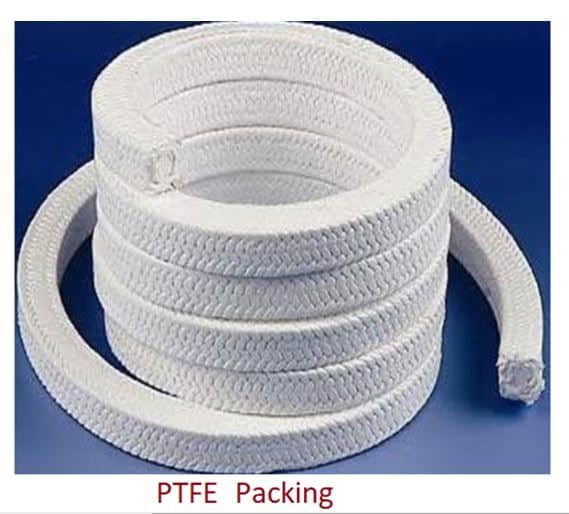
PTFE packing is one of the plastics that are chemical resistant, and it offers a low coefficient of friction. The control valve stem needs to be in a smooth finish to seal properly. The Packing causes leak if the stem or packing surface is in rough or damaged condition.
Polytetrafluoroethylene (PTFE) packing has good lubrication properties. The woven polytetrafluoroethylene packing has excellent corrosion resistance, and therefore it is most suitable for cryogenic media.
Its temperature resistance is poor. We use it in the temperature range of – 40°C to 232 ℃ (-40 °F – 450 ° F), pH range in 0-14 & pressure below 50bar. It is not suitable for the melt alkali metals, high temperature of fluorine & hydrogen fluoride medium. Therefore, it is not suitable for nuclear service.
Vegetable Fiber Valve Packing
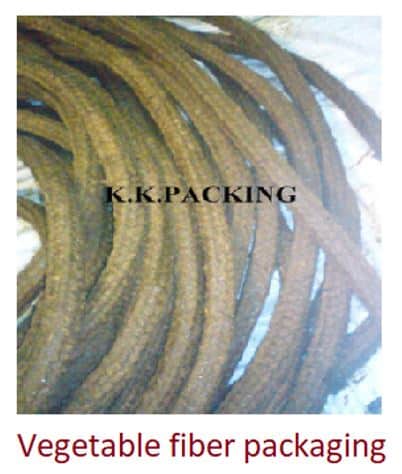
It is also called natural fibers packing, traditionally used in gland seals. This is a cost-effective material with excellent mechanical strength and good flexibility. Therefore, it is mostly used as a gland sealing material.
It is made of cotton impregnated oil, wax, or other anti-infiltration materials, used for low-pressure valves below 100℃ and media such as water, ammonia, etc. pH range is 5 to 9.
Asbestos Valve Packing
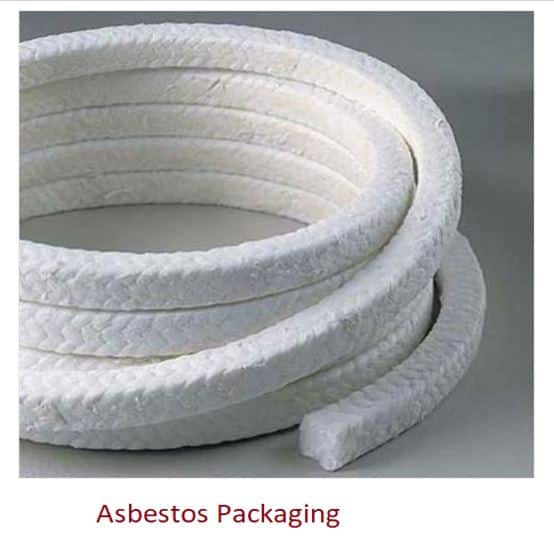
Asbestos fiber has good strength, better heat resistance, absorption, and its strength can withstand weak acid, strong alkali. The Inked asbestos, rubber asbestos, and oil-impregnated asbestos are the most suitable for valves with a steam temperature of 450 ℃.
Nowadays, asbestos packing is not in use because of its hazardous nature.
Rubber Padding Packing
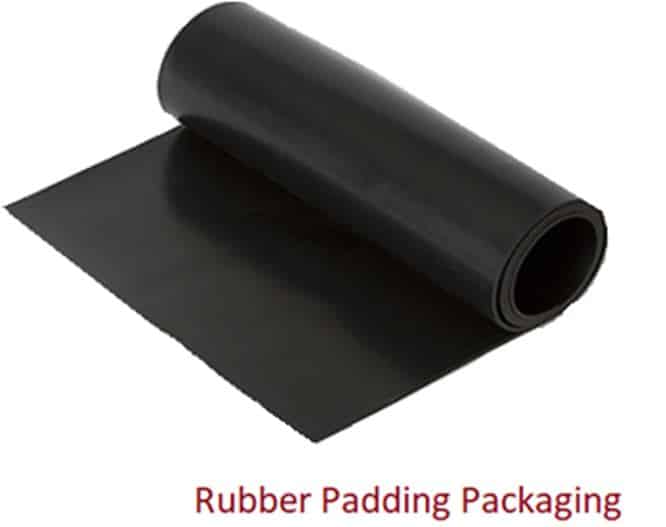
Rubber cloth, rubber rod, rubber packing ring are suitable for temperature ≤140 ℃ ammonia, concentrated sulfuric acid, and other media.
Carbon Fiber Packing
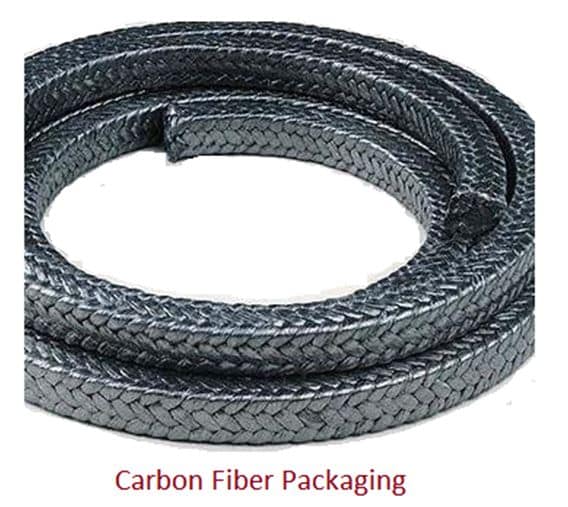
Carbon fiber filler is made from the impregnation of carbon fiber and polytetrafluoroethylene (PTFE) emulsion, it is a woven rope. It has excellent elasticity, excellent self-wetting, and resistivity against high temperatures. Also, it can work stably in the air temperature in range of -120~350℃, and the pressure resistance is less than 35MPa.
Metal + Rubber Packing
It includes metal-wrapped packaging, metal foil packaging, metal corrugated packaging, lead packaging, etc.
Metal wrapped packaging and metal laminated packing have the following characteristics.
- Erosion resistant
- High temperature resistant
- Abrasion resistant
- High strength
- Good thermal conductivity
Stainless steel wired flexible graphite woven packing
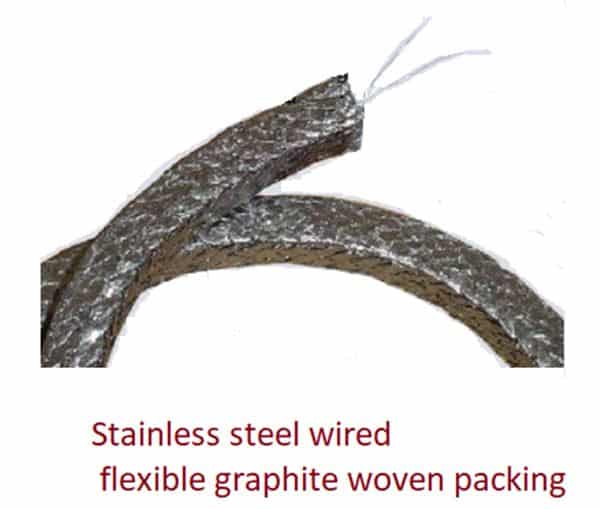
Graphite yarns reinforced with metal wire, metal wire may be a stainless steel wire
In general, valve packing materials are mainly PTFE and flexible graphite. Also, the packing box dimension accuracy, roughness, and stem surface dimension accuracy greatly affect the performance of the packing seal.
Read Next: